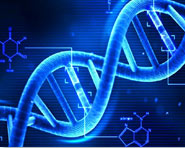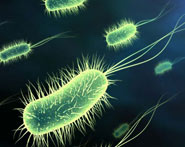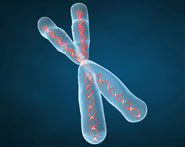


 النبات
النبات
 الحيوان
الحيوان
 الأحياء المجهرية
الأحياء المجهرية
 علم الأمراض
علم الأمراض
 التقانة الإحيائية
التقانة الإحيائية
 التقنية الحيوية المكروبية
التقنية الحيوية المكروبية
 التقنية الحياتية النانوية
التقنية الحياتية النانوية
 علم الأجنة
علم الأجنة
 الأحياء الجزيئي
الأحياء الجزيئي
 علم وظائف الأعضاء
علم وظائف الأعضاء
 الغدد
الغدد
 المضادات الحيوية
المضادات الحيوية|
Read More
Date: 2025-03-16
Date: 2025-01-16
Date: 2025-03-10
|
Activated B cells in germinal centers may differentiate into long-lived plasma cells or memory cells. The antibody-secreting cells enter the circulation and are called plasmablasts. From the blood, they tend to migrate to the bone marrow or mucosal tissues, where they may survive for years as plasma cells and continue to produce high-affinity antibodies, even after the antigen is eliminated. It is estimated that more than half of the antibodies in the blood of a normal adult are produced by these long-lived plasma cells; thus, circulating antibodies reflect each individual’s history of antigen exposure. These antibodies provide a level of immediate protection if the antigen (microbe or toxin) reenters the body.
A fraction of the activated B cells, which often are the progeny of isotype-switched high-affinity B cells, do not differentiate into active antibody secretors but instead become memory cells. Memory B cells do not secrete antibodies, but they circulate in the blood and reside in mucosal and other tissues. They survive for months or years in the absence of additional antigen exposure, undergo slow cycling, and are ready to respond rapidly if the antigen is reintroduced. Therefore, memory from a T-dependent antibody response can last for a lifetime. T he requirements for activation of functionally quiescent memory B cells to differentiate into plasma cells, and especially the role of T cell help in this reaction, are not well defined.



|
|
|
|
حقن الذهب في العين.. تقنية جديدة للحفاظ على البصر ؟!
|
|
|
|
|
|
|
علي بابا تطلق نماذج "Qwen" الجديدة في أحدث اختراق صيني لمجال الذكاء الاصطناعي مفتوح المصدر
|
|
|
|
|
|
|
مشاتل الكفيل تنتج أنواعًا مختلفة من النباتات المحلية والمستوردة وتواصل دعمها للمجتمع
|
|
|